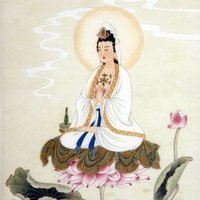-
Content count
217 -
Joined
-
Last visited
-
Days Won
3
-
Thank you so much for your perspectives, @Nungali and @Apech. I know very little about Egyptian culture and this is my first time encountering the Rainbow Serpent / Dreamtime myths, but I'm looking forward to learning more about both. I'm fascinated by cross-cultural serpent (particularly serpent goddess) motifs. I've been looking into some of the overlaps. I've spent time the most time with Sumerian, Israelite, and a tiny bit of Chinese cosmologies. The rest I need to study more deeply to have a better framework, but these are a few of the serpent cosmologies: Mesopotamia Levant / Israelite-Jewish Mesoamerica South America China South Asia Southeast Asia Australia / Oceania Africa Europe I'm really interested in how all of these myths / motifs developed and what it means for our shared histories. The myths are strikingly similar in terms of sky-linked or subterranean partly-other beings that descend or rise, teach ritual, crafts, and laws to humanity, significantly shape the landscape, and then withdraw (but remain present as judge, guardian, subterranean power, etc). Read together, it almost seems like ancestral encounters with a superior reptilian-like presence were encoded in local idioms (serpent bodies, hybrid iconography, songlines, temple rites) and preserved as foundational narrative memory. What do you think? What are some mythic details that support this? Or what are alternative considerations that undercut the idea?
-
In reference to the Pyramid Texts - Utterance 237/238 (in the tomb of Unas): This seems to be an inversion of the "natural" cosmic order in which the serpent of chaos succeeds and prevents Ra's dawn flame, the defeat of light reborn. In earlier, goddess-centered myths, the serpent is associated with water, earth, fertility as an emblem of life’s cyclical, regenerative force: continuity, not chaos. But in patriarchal solar theologies (Ra, later Greek Apollo), the serpent shifts toward an adversary role. It becomes the “dark, feminine, watery” threat that must be subdued by the sun, the spear, the order of the sky. So if identified with the divine feminine, the serpent's rising could be an older current surfacing, the submerged feminine chaos reclaiming primacy, and the dethroning of a more rigid solar order. To call its rise lamentable assumes the solar order is the unquestioned good. To call it exalted assumes that overturning order is inherently liberatory. The fact that both the serpent and the flame arise from the watery depths of Nun strikes me as interesting. Sibling energy, both sourced from the same cosmic womb. What is your personal view of the serpent, @Nungali? How do you read this process? Is your version meant to be an inversion of the original text? Or a reinterpretation? Is what's described an act of destruction or correction? A rebalancing? A release of repression and subconscious energy? Deep renewal through reversal? Is this a lament for lost light, an exaltation of the goddess's return, an overall celebration of the overturning of cosmic order? What was the original purpose of the text? Was it a protective spell? A warning in it's own historical context? Was the message intended for the people or for the serpent? I notice in these translations, the serpent comes from the earth and the light comes from the water depths. Edit: Water Above Fire was an interesting thread to visit after posting this.
-
In Dreams by Sierra Ferrell
-
For me, they flow together. Qigong and seasonal living keeps me grounded in the cycles of body and nature. Buddhism, especially the Eightfold Path, gives me a practical, day-to-day focus so I'm not just circulating energy, I'm directing it toward ethical development. So I think Buddhism and qigong (and wider Taoist practice) are definitely compatible. They reinforce each other. The Buddhist side keeps me honest about intention and ethics, the Taoist side keeps me tuned to the body and the seasons. One emphasizes liberation, the other emphasizes harmony. In my practice right now, that looks like lung support, moistening foods, breath-focused practice, letting go qigong, and divination around endings and storage (Taoist side of things), as well as focusing on Right Mindfulness, witnessing grief and release, siting with what’s fading without clinging, and gentle awareness sharpening (Buddhist). I don't practice Zen or Vajrayana. While it's my basic understand that the systems have some similarity, like breath dissolving into stillness, body changing with the seasons, subtle shifts in how awareness feels in the spine or chest, etc, I believe overall they're different systems with different goals (thought they may complement one another). Daoist work is about cycles of refining essence, qi, and spirit. In Zen it’s more about peeling away illusions until only clarity is left. I'm least familiar with Vajrayana, so I can't say for sure how they align. They may be compatible and mutually reinforcing, but I wouldn’t say equate Daoist neidan with Zen or Vajrayana. Here's how progression may look between the three systems: Neidan (Daoist Internal Alchemy) Chan/Zen (Buddhism) Vajrayana (Tibetan) Foundation (zhuji): conduct, diet, breath, lifestyle; quieting xin Precepts/discipline: sila, posture, calming the mind Ngöndro/prelims: refuge, bodhicitta, purification, guru yoga; basic channel regulation Refining jing → qi: conserve essence; lower dantian; small heavenly circulation Samadhi building: zazen stabilizes body–mind; energy naturally conserved Generation stage: deity visualization, mantra; guide winds into channels Refining qi → shen: circulate qi; harmonize yin/yang; nourish spirit Insight: kenshō; seeing emptiness; stabilize awareness Completion stage: tsa-lung/tummo; winds dissolve into central channel Refining shen → emptiness: return spirit to source; “immortal embryo” Integration: body-mind dropped off; non-clinging clarity Union of winds/drops/mind: clear light; mahāmudrā/ dzogchen recognition Union with Dao: return to origin; harmony/“immortality” Buddha-nature manifest: liberation from samsara Buddhahood/rainbow body: complete realization
-
Thus says the Lord: Stand at the crossroads, and look; ask for the ancient paths, ask where the good way is, and walk in it, and you will find rest for your souls. Jeremiah 6:16 The roads reach back much further, to Ancient Sumeria and beyond. Here are a few parallels worth exploring: Creation / Early Humanity Creation from watery chaos. Genesis 1 vs. Enuma Elish (Akkadian, Mesopotamian): order from primordial waters. Goddess Tiamat vs. impersonal “deep/tehom” in Genesis Humans formed from clay Genesis 2 vs. Sumerian/Akkadian motifs (e.g., Atrahasis, Enki & Ninmah): humans fashioned from clay; in Atrahasis, mixed with divine blood. Divine council language Genesis 1:26; 3:22; Psalm 82 vs. Mesopotamian divine assembly scenes: plural deliberation at creation/cosmos governance. Paradise / Garden Imagery Blessed garden with rivers. Genesis 2 (Eden, four rivers) vs. Enki and Ninhursag set in Dilmun (a pure, water-abundant land). Life-giving waters. Flood / Preservation of a Righteous One Cataclysmic flood, chosen survivor, boat, animals, landing, sacrifice Genesis 6–9 (Noah) ↔ Eridu Genesis (Sumerian Ziusudra), Atrahasis (Atrahasis), Gilgamesh XI (Utnapishtim). Shared plot skeleton; differences in cause (human noise vs. moral evil), gods’ motives, and theology of covenant. Long Lifespans / King Lists Extraordinary lifespans before/around the flood. Genesis 5; 11 ↔ Sumerian King List (antediluvian kings ruling for immense spans). Both show a drastic drop after the flood; functions differ (genealogy vs. royal historiography). Law and Covenant Forms Law codes and casuistic formulas Exodus 21–23 (Covenant Code) vs. earlier Mesopotamian codes (e.g., Ur-Nammu, Lipit-Ishtar, Hammurabi). Treaty/covenant pattern & curses Biblical covenant forms (e.g., Deut 27–30) show overlap with ANE treaty formats and curse lists common in Mesopotamian inscriptions. Wisdom / Instruction Proverbial instruction genre. Proverbs ↔ Sumerian Instructions (e.g., Instructions of Šuruppag): father-to-son counsel, practical ethics, terse maxims. Theodicy / suffering dialogues Job ↔ Mesopotamian dialogues/laments (e.g., Ludlul bēl nēmeqi—Akkadian). Shared problem of righteous suffering; differing conclusions about deity. Laments City/destruction laments. Lamentations ↔ Sumerian City Laments (e.g., Lament for Ur): communal grief over a city’s fall, theological framing of devastation. Birth/Foundling Motif Exposed infant rescued, rises to leadership. Exodus 2 (Moses) ↔ Sargon of Akkad legend: set adrift in a basket, found and raised to greatness. Motif-level parallel; narratives serve different ends. Towers/Temples and Language Ziggurat culture vs. Babel. Genesis 11 (Babel) vs. Mesopotamian ziggurats and city-building ideology. Shared backdrop of stepped temples; Genesis critiques human hubris/unified speech project. Timekeeping / Sevens Seven-day patterns & sacred time. Biblical week/Sabbath alongside Mesopotamian heptadic patterns (planetary days, seventh-day taboos)
-
Potential symbolic aspects of the texts that speak to this idea: 1. Book as Knowledge / Inheritance: Continuity, text, the Word made flesh; Pentacles as inheritance: tangible, codified, spirit in matter. - Jesus quotes scripture constantly: “It is written.” - His identity in John’s prologue: “In the beginning was the Word.” - Matthew: Incarnation in Jewish lineage; teaching discourse; “God-with-us” Book. Most text-structured: genealogy, law/fulfillment formulae (“it is written”), Sermon on the Mount, grounded inheritance and order. 2. Cup as Emotion / Spirit: Communion, covenant, surrender. - The chalice at the Last Supper: blood poured out, covenant sealed. - “Let this cup pass from me” (Matthew 26:39) - Luke: Priesthood, temple scenes, sacrifice/mercy for the marginalized. Eucharistic accents (Emmaus), compassion parables, sacrificial/serving tone, receptivity and grace. 3. Wand / Staff as will, action, life-force. Lance directs divine power and reveals hidden truth (blood and water flowing out). - Moses’ staff as sign of divine authority. - Christ pierced by the lance, his body literally opened by a spear. - Mark: Urgent action; authority; wilderness voice; passion fast-track. Kinetic, miracle-heavy, “immediately” pacing, will, initiative, prophetic force. 4. Sword as intellect, clarity, discernment, cutting between falsehood and truth. - “I came not to bring peace but a sword” (Matthew 10:34). - “The word of God is sharper than any two-edged sword” (Hebrews 4:12). - John: High Christology; Logos; piercing discernment; separation of light/dark. “Word” that divides belief from unbelief; sharp dialogues; theological clarity, discernment/cutting truth. Mastery of the four aspects could include developing a heart open to suffering and grace (Cup), the courage to act in the world (Lance/Wand), grounding in the Word (Book/Pentacle), and sharp discernment that divides truth from falsehood (Sword).
-
I'm not familiar with his work specifically, but I'll take a look at it. You may have already read it, here or elsewhere, but I made a post about the Sumerian flood epic. Fragments of the "Eridu Genesis" also mirror the story. There is certainly a lens through which Jesus can be viewed as a manifestation of the eternal Enki.
-
Yes, I can't speak to how reliable the testing methods are, and I agree that there are plenty of spiritual and political reasons to misrepresent the data. I have my own doubts about plenty of portions of the texts. But I'm not convinced that all parts of the Tanakh and supporting Jewish apocryphal writings were fabricated after the development of the letters and Gospels that came to be called the New Testament.
-
There is some evidence of physical Hebrew Bible manuscripts written well before the New Testament. Radiocarbon dating and the handwriting style of various Dead Sea scrolls (Isaiah, Psalms, Deuteronomy, etc.) places them between 300–100 BCE. The Great Isaiah Scroll is often dated around 150–100 BCE. As far as the New Testament, Jewish communities in Egypt translated the Hebrew Bible into Greek in the Hellenistic period. Surviving Greek papyrus copies from before the 1st century CE include: the Rylands Papyrus 458 (Deuteronomy), roughly 2nd century BCE the Papyrus Fouad 266 (Genesis/Deuteronomy) about 1st century BCE the Nahal Hever Greek “Minor Prophets” roughly 50 BCE–50 CE. The Letter of Aristeas (2nd century BCE) mentions the translation, showing that it was known and used. It's true that many religious relics have disappeared, but as you say, the texts do remain. Which texts remain in their original authored form is debatable. To some Christians, it doesn't matter that the Bible (various scriptural canons by branch) is their only inheritance, because to the ones who value the Gospel and the teachings of Jesus, there's no greater treasure in the world. Proverbs 2:4–5 “If thou seekest her as silver, and searchest for her as for hid treasures; Then shalt thou understand the fear of the Lord, and find the knowledge of God.” Matthew 13:44–46 “Again, the kingdom of heaven is like unto treasure hid in a field; the which when a man hath found, he hideth, and for joy thereof goeth and selleth all that he hath, and buyeth that field. Again, the kingdom of heaven is like unto a merchant man, seeking goodly pearls: Who, when he had found one pearl of great price, went and sold all that he had, and bought it.” If you think you’ve underrated it and you want to know what you're missing, read it. You don't need to be Buddhist to read the suttas, or Taoist to read the Dao de Jing, or Christian to read the Bible. There's a lot to be inspired by even if you don't subscribe to everything presented. When I first took an interest, I moved through the entire thing chronologically, on audiobook, at 1.5-2x speed. I quickly got the broad strokes and picked up details I wouldn't have if I weren't listening to it. David Suchet has audio recordings on YouTube that are quite nice. Knowing the genre of what you're reading is also helpful for engaging with it (ie narrative, historical accounts, poetry, etc). Once you have a mental framework for the Tanakh / Old Testament / New Testament, it becomes easier to engage in apocryphal literature of both Jewish and Christian tradition. That helps to develop a fuller picture of the traditions outside of the mainstream presentation, and you'll begin to see where threads connect to non-Abrahamic lineages.
-
Would that suggest that the practice of internal alchemy (depending on what that looks like) is incompatible with original Taoist "wu-wei" philosophy? If the two are not compatible, why is internal alchemy attributed to Taoist thought and practice? Who developed internal alchemy and why, and was their pursuit "Taoist" in nature, or a subversion?
-
In your estimation: What is the dying and rotting process? What is the yin-as-death-and-degradation/ascension-expansion/purification-refinement process? How do these processes differ on both a practical and metaphorical level? Why is it important to prevent degradation and death?
-

My Experience With Black Magic
心神 ~ replied to Nuralshamal's topic in Esoteric and Occult Discussion
This is a very interesting perspective. I asked ChatGPT to consider what karmic script white Anglo-Americans may be playing out, and it had this to say: 1. Ancestral Memory and Disconnect Many indigenous and non-Western cultures have retained deep links to dreamwork, ancestors, and spirit because survival demanded it. Guidance from visions, intuition, or collective rituals was essential for navigating uncertainty. For white Anglo Americans, especially those shaped by centuries of Enlightenment rationalism, Protestant mental frameworks, and colonial expansion, there was a cultural severing from intuitive and ancestral memory. Dreams and spirit were demoted to “irrational,” while reason, efficiency, and control were elevated. The karmic imprint here is loss of embodied connection, a forgetting of how to listen. 2. Spiritual Purpose of White Anglo Americans From a karmic perspective, souls incarnating in Anglo contexts may have chosen it not to inherit an unbroken lineage of spirit, but rather to learn how to reawaken what was forgotten. Their spiritual challenge is not an automatic connection, but the discipline of rediscovery: To bridge intellect with intuition without dismissing either. To humble the mind and allow heart and body to remember their rightful place. To transform alienation (from land, body, ancestors) into deep reverence for life and the Earth. 3. Karmic Connection In both Kabbalah and Sufi frameworks, karma or qadr manifests as the correction of past imbalances. For white Anglo Americans, some key karmic corrections could be: From domination to stewardship: healing the karmic wound of colonization by becoming protectors of the Earth and allies to indigenous wisdom. From abstraction to embodiment: shifting from living in the head to re-entering the body, land, and senses. From isolation to interbeing: dissolving the illusion of individualism and rediscovering kinship with all peoples, creatures, and worlds. In this way, the absence of strong inherited dream/ancestral capacities may itself be the “teaching field”—a harder soil that requires conscious cultivation, so the lesson is deeply earned. Thus, the Anglo karmic path is not to “become like others,” but to integrate their mental organization and rational clarity with the reawakened ancestral spirit. The synthesis is their dharma. White Anglo Americans, karmically, are here to learn how to remember spirit after forgetting it, to reconnect intuition with intellect, and to transform the legacy of separation into one of integration, stewardship, and humility before the living cosmos. Their lack is their teacher. Their task is not to envy the natural gifts of others, but to midwife a new balance—one where the mind bows to soul, and the heart leads once again.- 145 replies
-
- 1
-

-
- black magic
- evil eye
-
(and 7 more)
Tagged with:
-
@qin00b This is my favorite Baduanjin sequence with Br. Thich Man Tue of Plum Village. I don't worry about reps, I just follow along with the video and since it's the only one I follow for Baduanjin, it's consistent for me. It's 40 minutes long, but he has shortened versions as well. I'm not a qigong specialist, but I know there are considerations to practice. Your leg challenges may have been how you performed the sequence. It may also relate to the state you practiced in, or how quickly before or after you ate or took a shower, which can affect Qi flow.




